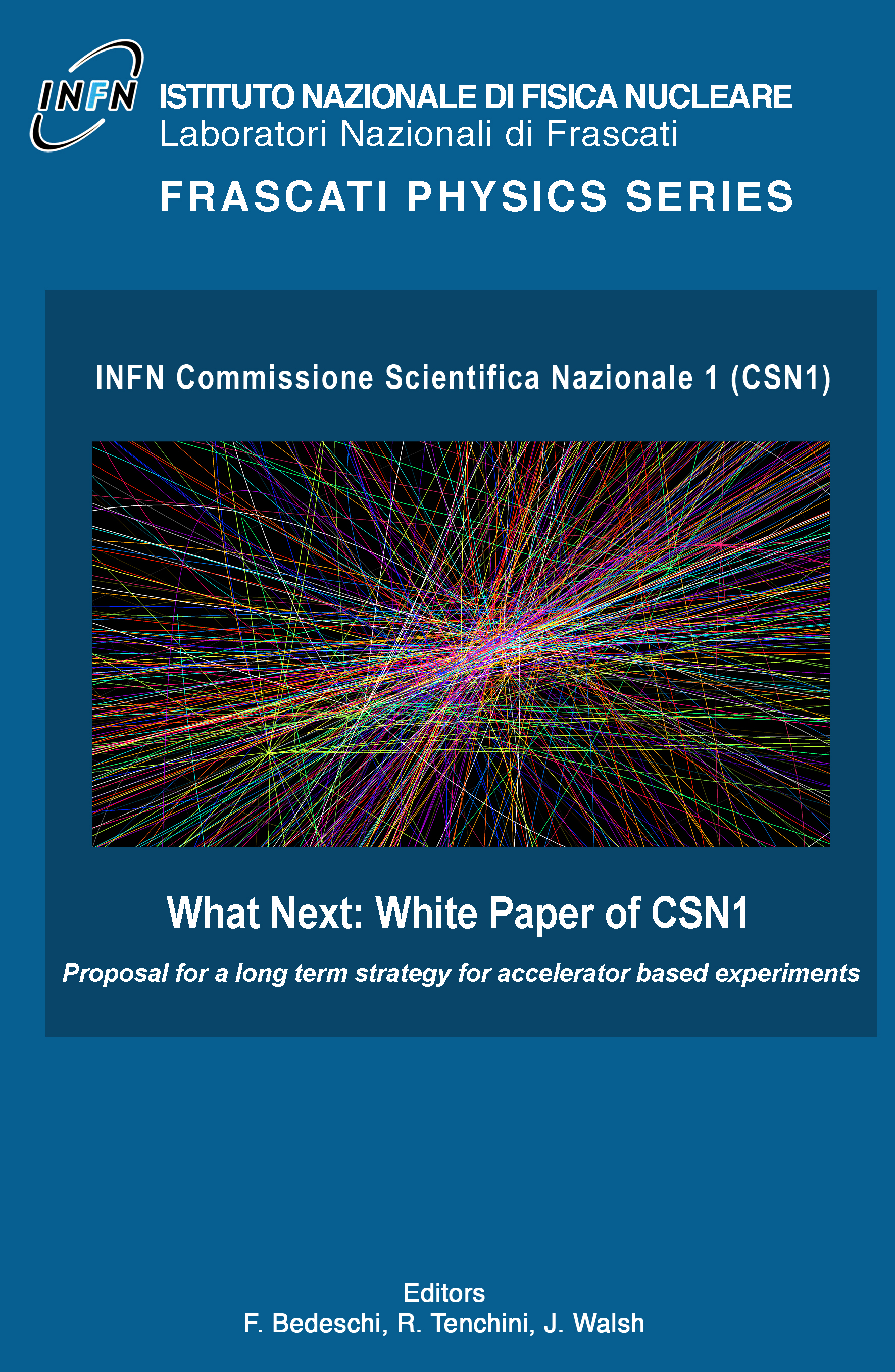The book is the result of one year of work by many colleagues who have actively participated in four working groups and one task force, producing some preliminary studies of the discovery potential of this or that machine, and of the most important questions that need to be answered -and the projects that appear more suited to answer them. Editors of the work are Franco Bedeschi, Roberto Tenchini, and John Walsh.
The working groups were thus titled:
- Standard Model
- Beyond the Standard Model
- Flavour Physics
- Non-perturbative QCD
- Task force on new technologies
 Following the good advice provided in the introduction ("Executive Reading: This document includes a considerable amount of information... A Summary and Outlook section is provided at the end of each of these chapters. We suggest to readers who wish to have a broad and general view of the subjects to read these summaries and the final recommendations in Chapter 8."), I skipped all the gory details and read those summaries - what's best than a broad and general view ? Especially when it comes with just a few pages of reading....
Following the good advice provided in the introduction ("Executive Reading: This document includes a considerable amount of information... A Summary and Outlook section is provided at the end of each of these chapters. We suggest to readers who wish to have a broad and general view of the subjects to read these summaries and the final recommendations in Chapter 8."), I skipped all the gory details and read those summaries - what's best than a broad and general view ? Especially when it comes with just a few pages of reading....I think I can make an executive summary of the summaries I read, if you are too busy to get to read the document yourself (it's available in electronic form here):
- Standard Model: on a 10 year timescale the 300/fb that the LHC can acquire will provide better precision on a number of key observables, especially in the Higgs and top quark sectors. A High-luminosity LHC can of course go deeper but -my own take- nobody can promise you that we will learn anything extraordinary from that improved precision. Of course we'll get to know more precisely that the Higgs is the Higgs, but it does not look extremely exciting to me.
- Beyond the Standard Model: the working group examined many scenarios and included a discussion of what a 100 TeV proton-proton collider can do for us. In general, we can test Supersymmetry to fine-tuning levels of 1/1000, and if we come up empty handed we would have "strong evidence that a dramatic change of paradigm in the understanding of the Higgs mass in terms of higher scales would be necessary". Well, I wonder how many of my colleagues would still keep arguing that SUSY is behind the corner then... On the naturalness-independent scenarios one may promise tighter constraints, but admittedly when the ceiling is M_planck going from 10 to 100 TeV is not too exciting either.
- Flavour Physics: here there are many topics which high luminosity can help attack. The working group considered an "extreme flavour physics experiment" whereby the full luminosity potential of the HL-LHC could be exploited for flavour physics measurements. The challenge is the huge datasets one would collect and have to study: a paradigm shift is there envisioned, whereby analysis would be performed online. This is quite interesting but frankly not too strongly motivated in my humble opinion.
- Non-perturbative QCD: here I was hoping for some bright new idea on how to study hadronic matter at low energy, but the means we have at our disposal do not seem to guarantee a paradigm shift in the next ten or twenty years. Or perhaps I am too much of a pessimist.
Finally, the book provided recommendations, spelt out clearly and concisely - exactly suited for people like me, who would not understand the details anyway. I am reporting here some of them, the ones I found more remarkable, one way or the other.
R1: [...] to continue and strengthen its support of R&D for the development of new high-field magnets and conventional or un-conventional accelerator structures.
R4: It is a top priority [...] to continue funding of all approved experiments and their approved upgrades until their planned completion.
R7: [...] supports INFN participation in studies and R&D related to the future colliders. Our community must be part of the planning of the future.
Overall, a lot of work has gone in the production of this report, and I am sure my colleagues who authored it are rightly proud of their result. There are many pearls hidden in the 200 pages of text, which most readers will however overlook; but good ideas always find their way...
As for me, I confess the book did not really relieve me as I hoped of some of the pessimistic views I have of the whole field of HEP. Don't take me wrong: I love this job and I am quite happy to continue to use whatever means we have available to study the structure of matter and the greatest enigmas subnuclear physics hides; but I start to think that we are still far from the point when we will really turn the page and read a completely new story.




Comments